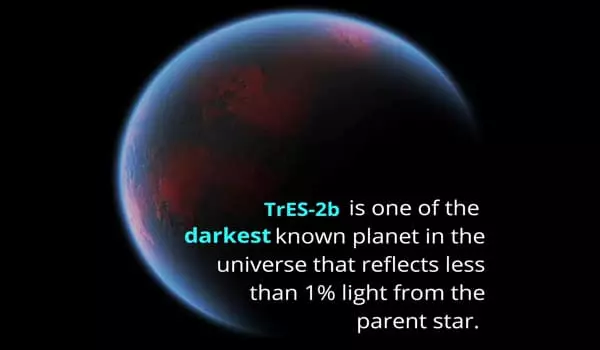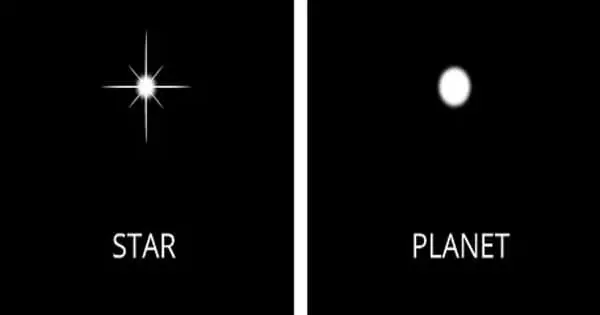TrES-2b is an extrasolar planet that orbits the star GSC 03549-02811 750 light-years from Earth. It travels only 3 million miles around its star. The planet was named the darkest known exoplanet in 2011, reflecting less than 1% of all light that strikes it. The mass and radius of the planet indicate that it is a gas giant with a bulk composition similar to Jupiter. TrES-2b, unlike Jupiter, but like many other planets discovered around other stars, is very close to its star and belongs to the class of planets known as hot Jupiters. The Kepler spacecraft had a clear view of this system.
TrES-2b is heated to over 1,800 degrees Fahrenheit by the star’s intense light, which is far too hot for ammonia clouds. Its exotic atmosphere, on the other hand, contains light-absorbing chemicals such as vaporized sodium and potassium or gaseous titanium oxide.
Other projects are still looking into the TrES-2b planet, and the parameters are constantly being refined. It is now the planet under the most intense scrutiny for the presence of a satellite. A study published in 2007 improved stellar and planetary parameters. According to a 2008 study, the TrES-2 system is a binary star system. This has a significant impact on the stellar and planetary parameter values.

Discovery
TrES-2b was discovered by the Trans-Atlantic Exoplanet Survey (TrES) on August 21, 2006, by detecting the planet’s transit across its parent star with Sleuth (Palomar Observatory, California) and PSST (Lowell Observatory, Arizona), both of which are part of the TrES network of 10–cm telescopes. On September 8, 2006, the W. M. Keck Observatory confirmed the discovery by measuring the radial velocity of the star that hosts TrES-2b.
TrES-2b is a fascinating and practical planet. It orbits a solar mass star 717 light-years from Earth in a tight 2.47-day orbit, just over Jupiter’s mass. It’s also a transiting planet, discovered by the Trans-Atlantic Exoplanet Survey, which uses small, automated equipment and off-the-shelf technology to find planet candidates and feed them to larger observatories like the Keck Observatory and Palomar Observatory. But TrES-2b has a new and important distinction: It’s in the field of view of the space-based Kepler telescope.
Spin-orbit angle
More information about the relationship between the parent star and the planet’s orbit was published in August 2008. The orbit was determined to be −9±12° tilted from the stellar equator. The orbital direction was determined to be the same as the rotation of the star.
Kipping and Spiegel calculated TrES-2b’s reflectivity using data from NASA’s Kepler spacecraft. Kepler is designed to precisely measure the brightness of distant stars. The brightness of the TrES-2 system was measured as the planet orbited its star. They noticed a subtle dimming and brightening as the planet’s phase changed.
TrES-2b, like our moon, is thought to be tidally locked, so one side of the planet is always facing the star. And, like our moon, the planet’s phases change as it orbits its star. As a result, the total brightness of the star and planet varies slightly.
















